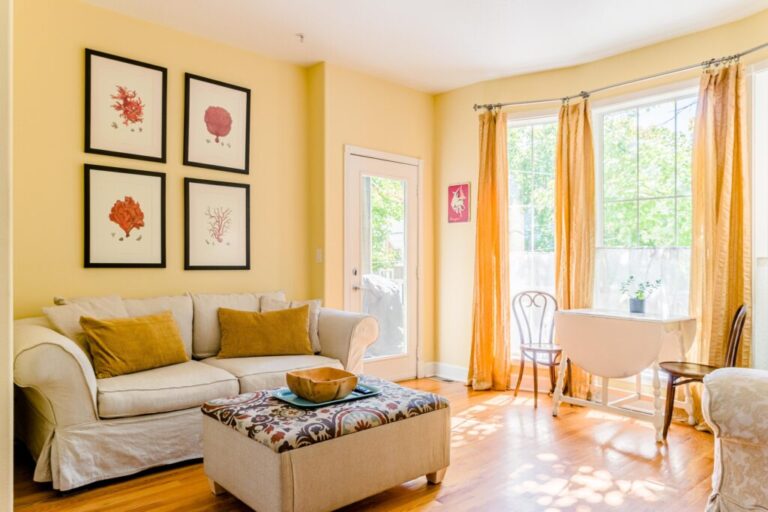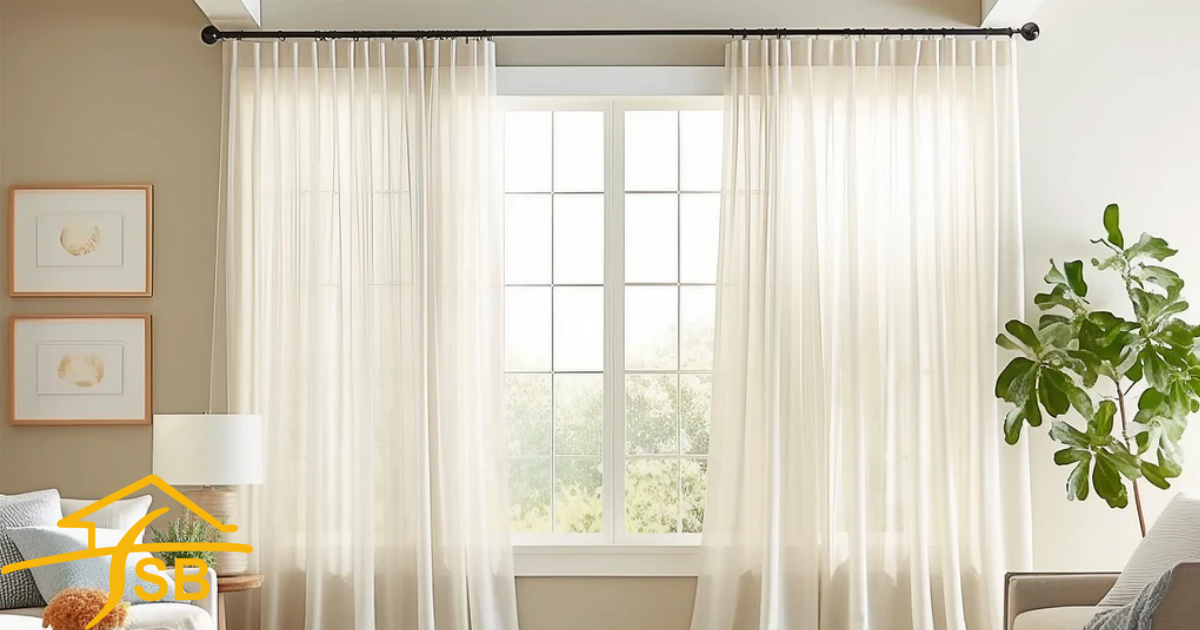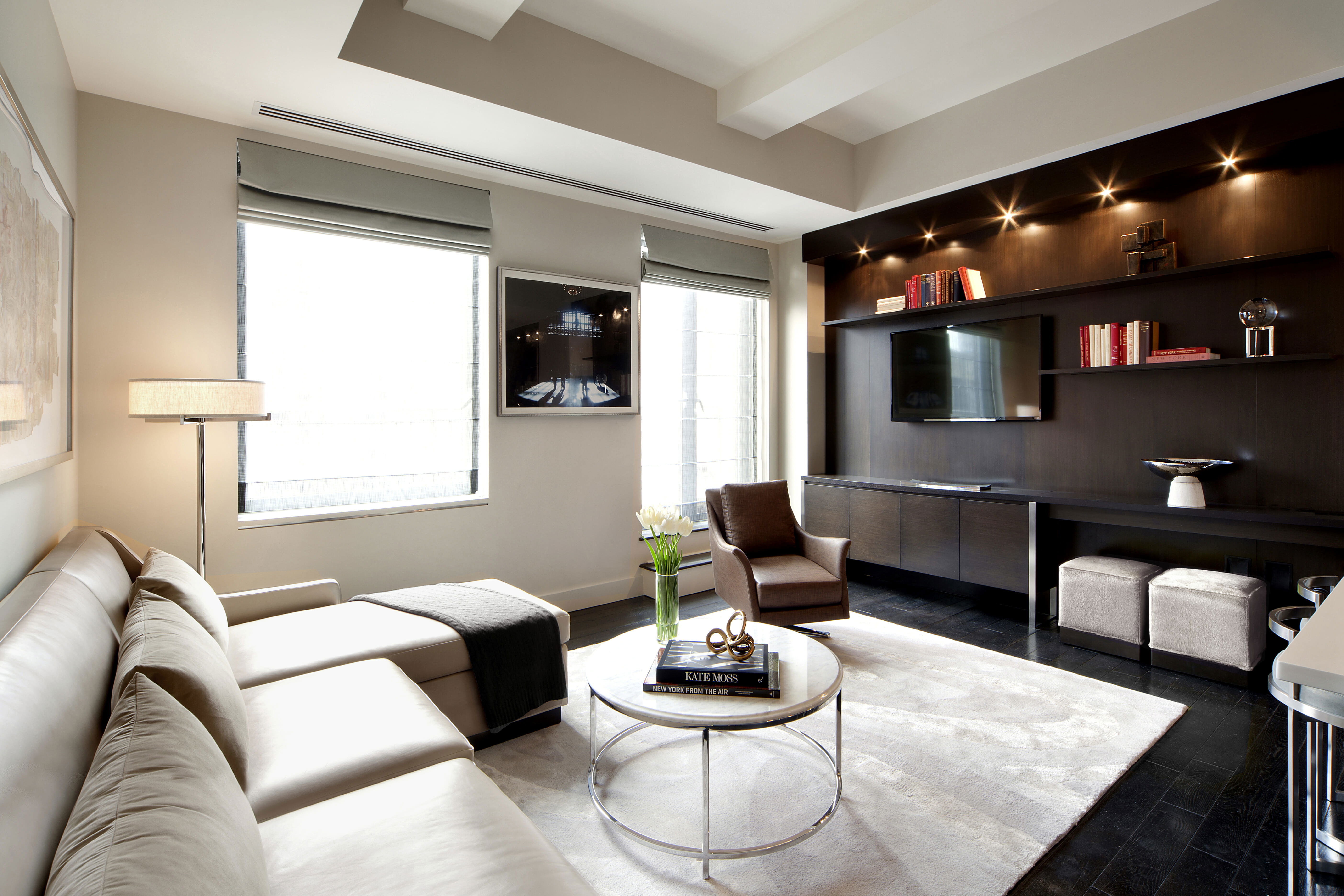:max_bytes(150000):strip_icc()/7499_220601_Flanigan-e43b11e728c9439081c0c4af528deade.jpg)
Decorating a home, especially a smaller one, might seem like a daunting task, but achieving a designer-worthy look doesn’t have to be complicated or expensive. Many people find themselves challenged by limited square footage, often leading to rooms that feel more cramped and closed in than cozy and efficient. However, there’s good news! We’ve consulted with several designers who share their simple, budget-friendly ideas, along with clever hacks and tricks of the eye, to transform even the smallest spaces into bright, airy, and inviting sanctuaries.
Our goal is to empower you, the DIYer, with practical and actionable solutions that are immediately useful. This isn’t about knocking down walls or undergoing costly renovations; it’s about making smart choices with what you have and implementing simple adjustments that yield dramatic results. By focusing on visual strategies, we can trick the brain into perceiving more space, making any small room feel significantly larger and more open.
From the subtle power of paint to the strategic placement of everyday items, these tips are designed to be straightforward, easy to understand, and incredibly effective. So, if you’re ready to breathe new life into your space and make your small rooms live large, let’s dive into the first set of essential decorating secrets that promise to make a big difference without breaking your budget.

1. **Embrace Light and Neutral Colors**One of the most impactful and inexpensive ways to transform a room is through its color palette. When it comes to making a small room feel bigger, embracing light and neutral colors on your walls, and even beyond, is a foundational strategy. These lighter tones reflect light, instantly making a space feel airy and expansive, rather than suffocating, which can happen with dark colors that make walls feel like they’re closing in.
Consider sticking to classic colors like beige or gray, especially in areas where flow is important, such as on a first floor connecting multiple rooms. As designer Christopher Breining wisely points out, “You want to minimize jarring transitions.” Neutral walls also offer incredible decorating flexibility, allowing you to easily switch out accessories and adapt your style without needing a complete repaint. If you have two small rooms next to each other, painting them the same neutral color further enhances the feeling of spaciousness, helping them connect rather than feel fragmented. For a subtle variation, you can even look at a paint strip and move up or down a shade or two from room to room, as suggested by Lara Allen-Brett.
Beyond just walls, the power of a light color scheme extends to a monochromatic approach, where walls, trim, and ceilings are all painted in similar shades. Interior designer Bree Steele notes that “A monochromatic color scheme (think walls, trim and ceilings are all painted the same shades) is also a good trick to expand the room as it creates a seamless look with no hard line for the eye to stay hung up on.” This visual continuity makes your eyes wander without interruption, blurring the boundaries between walls and ceiling, and making the space feel endless. While light colors are generally safest, don’t shy away from warm, soft neutrals like off-white, pale taupe, or muted sage, as Steele finds them less sterile than stark white, bringing warmth while still reflecting light beautifully.
:strip_icc()/decorating-tips-1-katie-hodges-design-midwilshire-1-cc8e4ad1f4ff4aae8205f2106e956b42.png)
2. **Strategically Arrange Furniture**How you arrange your furniture plays a monumental role in defining the perceived size and flow of a small room. The common misconception is that pushing all furniture against the walls will make a room look bigger. However, this often has the opposite effect, making the room feel flat, imbalanced, and even more cramped. Instead, a strategic floating arrangement can create breathing room and improve pathways, making the space feel considerably larger.
For living spaces, which are often gathering hubs, creating a warm and welcoming environment means inviting connection. Michelle Lynne, a Dallas-based stager, recommends a “conversation area that has a U-shape, with a sofa and two chairs facing each other at each end of the coffee table, or an H-shape, with a sofa directly across from two chairs and a coffee table in the middle.” This not only fosters interaction but also inherently moves furniture away from the perimeter, granting the illusion of more space behind and around the pieces.
Even just a few inches of space between your furniture and the wall can make a significant difference. Lynne emphatically states, “floating the furniture away from the walls makes the room feel larger.” This creates dimension and allows for pathways around the periphery, which, as interior designer Ashley Powell explains, makes the spaces feel “more windy and spacious.” By creating these clear routes for movement, you reduce the feeling of obstruction and maximize the functional and visual openness of your room, transforming it from a boxy layout into a more dynamic and inviting area.

3. **Maximize Natural Light with Sheer Treatments**Natural light is one of your most powerful allies in making a small room feel bigger, brighter, and more inviting. Heavy, outdated drapes, while perhaps once fashionable, can significantly block this precious light, making a small room feel stuffy, suffocating, and smaller than it is. Michelle Lynne cuts straight to the chase, declaring, “When it comes to heavy, outdated drapes, a bank of windows is better than an ugly one.”
The key is to opt for window dressings that are both functional and elegant, prioritizing light over visual weight. Lightweight fabrics like cotton, linen, and silk blends are highly recommended for panels because they hang beautifully and don’t absorb light. If your room receives ample sun, light colors are a smart choice as they resist fading. For homeowners on a budget, new window treatments can dress up a room at a relatively low cost, with options like curtains, roller shades, or vertical blinds being excellent choices.
Alternatively, consider stripping your windows bare to allow natural light to stream in uninterrupted. If privacy is a concern, sheer curtains, slatted window blinds, or bamboo shades are perfect compromises. They offer some level of privacy while still permitting light to filter through, brightening every corner of your small room. These choices ensure that the natural radiance of the outdoors contributes to an airy and expansive feeling indoors, transforming how the entire space is perceived.

4. **Harness the Power of Mirrors**Mirrors are much more than just decorative accents; they are a designer’s secret weapon for making a small room feel significantly larger and brighter. Their ability to reflect light and create the illusion of depth is truly transformative, essentially doubling the perceived size of a space. As Christopher Breining observes, “Mirrors can make a space feel brighter because they bounce the light around the room.”
However, the strategic placement of mirrors is critical to maximizing their impact. Hanging a mirror directly opposite a window, for instance, might seem intuitive for light reflection, but it can actually bounce the light right back out the window. Instead, position mirrors on walls perpendicular to windows. This allows them to effectively capture and redistribute natural light throughout the room, illuminating darker corners and expanding the visual field.
Interior designer Bree Steele often places “a large mirror across from a window to reflect natural light,” further amplifying the room’s brightness. The reflection itself adds depth, making the room feel like it extends beyond its physical boundaries. When selecting a mirror, an extra-large floor mirror can be particularly effective, literally doubling the view. Just be mindful of what your mirror is reflecting; ensure it captures pleasing views, natural light, or a decorative focal point, rather than clutter, to enhance the sense of openness and serenity.

5. **Declutter Ruthlessly and Regularly**If you want to make a small room look bigger, the very first step, and arguably the most powerful, is to declutter. Too much visual “stuff” is the arch-nemesis of spaciousness, instantly making a room feel overwhelmed, cramped, and chaotic. The longer you reside in a home, the easier it is to become accustomed to the mess, making it less visible over time, which is why a fresh pair of eyes can be invaluable. Less stuff means reduced distractions and larger empty areas, which directly translates to a feeling of more room.
While hiring a professional organizer, who might cost an average of $522 per project or between $55 and $100 per hour, is an option for tackling notoriously packed bookshelves and closets, a DIY approach can be just as effective. Christopher Breining suggests a pragmatic rule: “whittle down what’s on your shelves by 50%.” Once you’ve culled the excess, arrange what remains thoughtfully. Mix horizontal stacks of books among vertical rows and intersperse decorative objects, like bowls or vases, among them to create visual interest without the clutter.
Decluttering isn’t just about appearances; it’s about reclaiming precious mental space and improving your mood. The goal isn’t necessarily to become a minimalist, but rather to be intentional with your space, keeping only meaningful or truly useful items on display. This includes tucking away necessary but unsightly items like remotes and console controllers in closed storage or baskets, and taming wire clutter. By cutting down on visual noise, you create an instant sense of calm and an undeniable impression of greater space.
:strip_icc()/renovated-neutral-colored-living-room-2f194807-235cf8f650594de5859d48b9f550db0c.jpg)
6. **Incorporate Leggy and Clear Furniture**When furnishing a small room, the visual weight of your furniture choices can dramatically impact how expansive the space feels. Bulky furniture pieces that sit directly on the floor tend to appear heavy, consuming visual real estate and making a room feel weighed down and cramped. This is where the strategic choice of leggy and clear furniture becomes a game-changer.
Opting for furniture with visible legs immediately opens up a small space. By allowing the floor to show beneath, these pieces create an illusion of more light and airiness. As interior designer Bree Steele aptly puts it, “Raised furniture leaves more of the floor to be visible, which tricks the eye into perceiving more space.” This simple design element encourages the eye to continue its journey across the floor, uninterrupted, rather than stopping short at the base of a solid piece of furniture.
Taking this concept a step further, clear furniture, such as glass desks or acrylic coffee tables, offers a “barely-there” look that makes a room feel incredibly airy. Steele confirms, “Glass or acrylic furniture create a barely-there look that keeps the room feeling airy.” These transparent pieces don’t obstruct sightlines, allowing light to pass through them and maintaining an open visual field. Incorporating such furniture prevents the room from feeling overcrowded, providing functionality without adding to the overall visual density of the space, making them chic and unique design elements for any small room.

:max_bytes(150000):strip_icc()/GettyImages-1161177015-f1de4ba58a6c4f50969d9119d80405a6.jpg)


